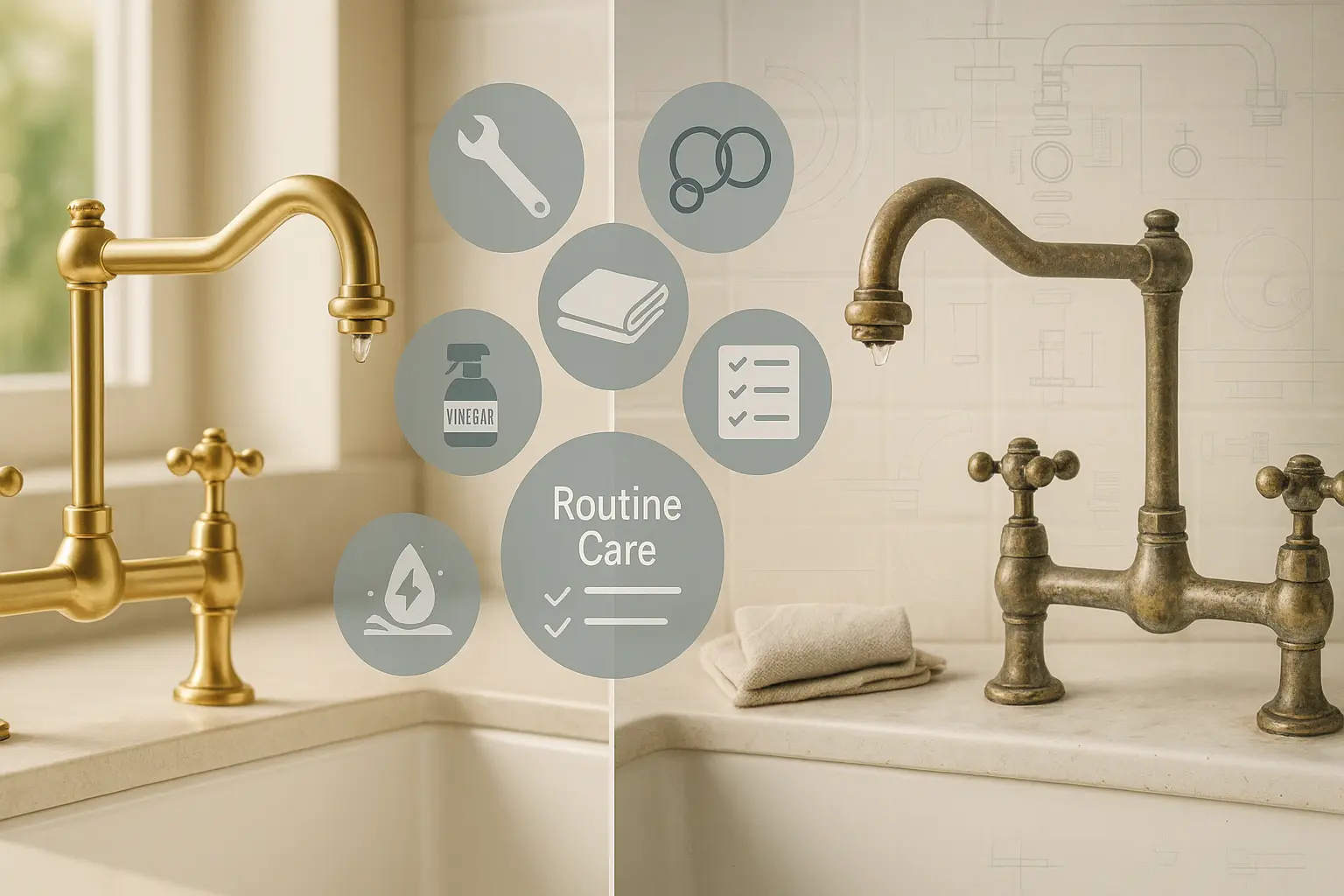
Essential Safety Features for Every Shower
Safety Features for Every Shower Shower safety is a top priority for a secure bathing environment. Falls are the leading


Dual-handle faucets are a timeless fixture in both traditional and modern kitchens, offering precise temperature control and a classic aesthetic. However, without proper care, they can develop issues like leaks, handle stiffness, and uneven water flow over time. The good news? Most of these problems are preventable with a bit of foresight and routine maintenance.
Whether you’re working with a traditional bridge design or a more modern two-handle layout, this guide will help you understand how to avoid faucet issues before they start—ensuring your faucet remains functional, beautiful, and long-lasting.
If you’re currently using or considering a brass dual-handle faucet, this advice is especially important for protecting the finish and internal components.
Unlike single-handle models, dual-handle faucets feature separate hot and cold handles, often joined through a central spout or exposed bridge piping. This allows for more precise control of water temperature and is a favorite among homeowners who value traditional design and tactile function.
They’re especially popular in bridge faucet styles, which add a touch of vintage elegance while remaining highly functional.
Why it happens:
Prevention tips:
If you’re unsure how to disassemble your fixture, consult our bridge faucet installation guide to better understand component layout.
Why it happens:
How to avoid it:
Bonus tip: Cleaning methods matter—especially for brass. See our guide on how to clean brass with household products to safely remove buildup without damaging the finish.
Why it happens:
Prevention methods:
If you’re working with unlacquered brass faucets, handle maintenance is even more critical, as natural patina and water spots can conceal emerging stiffness or leaks.
Why it happens:
How to avoid it:
Why it happens:
Prevention tips:
Get specific methods in our article on how to clean brass: 5 tested methods to protect the unique beauty of brass faucets without stripping the surface.
Routine care isn’t just about aesthetics—it can extend the life of your faucet by years and prevent expensive repairs or replacements. Here’s what a solid maintenance plan looks like:
This is particularly important for brass kitchen faucets, where structural integrity and finish preservation are key to long-term value.
Even the most beautifully crafted dual-handle faucet won’t perform as expected—or last as long—if it’s installed improperly or paired with untreated hard water. If you want to avoid faucet issues long-term, addressing these two underlying factors is essential.
Hard water is rich in minerals like calcium and magnesium. Over time, these minerals build up inside cartridges, aerators, and internal valve stems—causing stiffness, low pressure, and even corrosion on exposed surfaces.
Signs of Hard Water Damage:
Solutions:
To understand how to clean your faucet safely without damaging the finish, check our trusted guide:
How to Clean Brass with Household Products
Poor installation is one of the leading causes of early faucet failure—even more so in dual-handle systems, which involve more connection points than single-handle faucets.
Common Installation Mistakes That Lead to Issues:
Pro Installation Tips:
Planning a DIY upgrade? Our step-by-step bridge faucet installation guide is a great resource for installing two-handle fixtures the right way—especially for vintage-inspired styles with exposed piping.
When you combine high-quality materials (like solid brass) with proper installation and water treatment, your faucet isn’t just less prone to leaks or buildup—it becomes easier to maintain, smoother to operate, and more beautiful over time.
This is especially important if you’re considering premium dual-handle bridge faucets, which are designed for longevity and ongoing maintenance—not short-term replacement.
The easiest way to avoid faucet issues is to start with a well-made, durable fixture. High-quality dual-handle faucets, especially those crafted from solid brass, are less prone to breakdowns and designed for long-term maintenance—not short-term replacements.
Insideast offers a curated range of premium unlacquered brass kitchen faucets and handcrafted bridge faucets that deliver both enduring function and timeless style.
Dual-handle faucets offer refined control, elegance, and lasting charm—but only if you care for them properly. By staying ahead of leaks, buildup, and wear, you can enjoy years of flawless operation and preserve the beauty of your fixture.
Want a faucet built to last? Browse our full faucet collection to find a design that fits your space, performs with excellence, and resists the most common faucet issues.

Safety Features for Every Shower Shower safety is a top priority for a secure bathing environment. Falls are the leading
Receive your order to your door address anywhere in the world using our shipping partners
You're covered by our 30 days return policy
Big part of our reviews testifies about the quality of support provided
Secured payments using renowned payment gateways